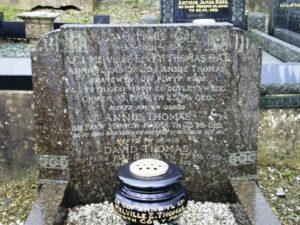Llangunnor is a Parish situated on the southern outskirts of the main county town of Carmarthen, which is separated from the larger town by the River Towy. There was previously no known Great War Memorial at Llangunnor, but recently (2019) a scroll was discovered in the Vicarage, which contains the names of all those of the Parish who served, with five names highlighted as men who fell. I have used the names from the 1922 published Carmarthen County Memorial roll as the basis for this page and have added names of those known to be from the Parish who were not named. There is an individual memorial to Lieutenant R H Harris in the Parish Church, as well as a memorial to those who fell during World War Two. Photographs of these memorials were kindly supplied by Lee Whatley, whilst Wyn Davies kindly photographed the war graves in the Churchyard for me.
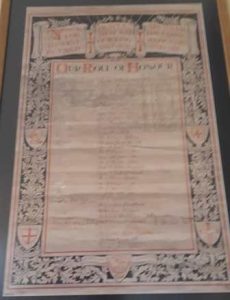
The Great War, 1914-1918
Sydney Ernest Branfield, Private, 320111, Welsh Regiment. Sydney was the son of Edward and Emily Branfield of Llangunnor. The family were living at Bryngorise Issa, Nantycaws, Llandefeilog prior to 1901. Sydney enlisted at Carmarthen into the Pembroke Yeomanry, which moved to Egypt in March 1916 as part of the 1st Mounted Division. In March 1917 the battalion merged with the Glamorgan Yeomanry to form the 24th Battalion, Welsh Regiment, which was attached to 231 Brigade, 74th (Yeomanry) Division. The Division then took part in the advance into Palestine, and it was during this advance, at the Third Battle of Gaza, that Sydney was killed on 30 October 1917. He was 32 years old, and is commemorated on the Jerusalem Memorial, Israel.
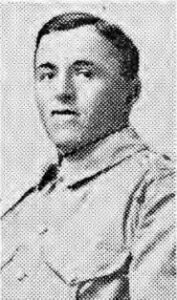
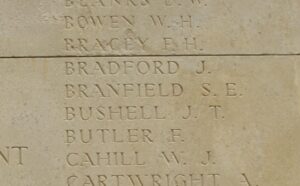
David Davies, Private, 200279, Welsh Regiment. David was born at Newchurch in 1896, the son of William and Elizabeth Davies. He had been raised at St. Clears before the family moved to 79, Priory Street, Carmarthen. He had worked as a miner at Senghenydd prior to the war, and returned to Carmarthen to enlist into the 1/4th Battalion, Welsh Regiment, which was the local Territorial Battalion, attached to 159 Brigade, 53rd (Welsh) Division. The Division landed at Cape Helles, Gallipoli, on 9 August 1915, and was immediately thrown into action, spending the next few days in isolated pockets, fighting against a Turkish counter-attack during the Battle of Sari Bair, and then at the Attack on Scimitar Hill. The Division remained here throughout the coming months, and suffered severe losses in manpower strength during the great November 1915 blizzard on Gallipoli, when its total strength was reduced to less than that of a full-strength Brigade. On 11 December 1915 the Division was evacuated to Mudros, and by 23 December 1915 were moved to Egypt. They remained on the Suez Canal Defences for the next twelve months, where it took part in operations against the Sultan of Darfur, and in March 1917 took part in the advance into Palestine. David was wounded during the First Battle of Gaza, and died on 29 March 1917. He was 20 years old, and is buried at Deir El Belah War Cemetery, Egypt. David is not listed on the Carmarthen County War Memorial roll, but his parents are buried at Llangunnor Churchyard.
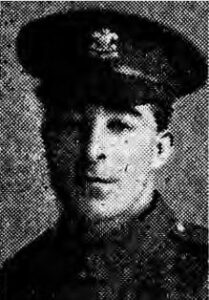
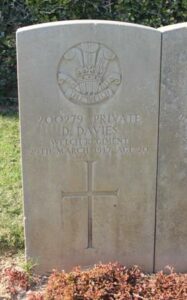
Evan Thomas Davies, Private, 54551, Welsh Regiment. Evan was the son of David and Lydia Davies, of Penybryn, Philadelphia, Llangunnor, Carmarthen. He enlisted at Carmarthen into the Pembroke Yeomanry, but was sent to France, probably in August 1916, to join the 15th Battalion, Welsh regiment, known as the Carmarthen Pals, who were attached to 114 Brigade, 38th (Welsh) Division. The division had just moved to Boesinghe after its successful capture of Mametz Wood, and remained at Boesinghe until taking part in the Battle of Pilckem Ridge on 31 July 1917. The 15th Welsh also fought at Langemarck alongside the 20th (Light) Division, before the entire 38th Division moved to the Armentieres sector in September 1917. In April 1918 the Division moved to positions north of Albert, to reinforce the decimated British forces which had fought there during the German Spring offensive of 21 March 1918 onwards. On 10 May 1918 the 15th Welsh were tasked with the capture of the German lines within Aveluy Wood, but the range of their artillery support had been miscalculated, and fell short onto the Welshmen, causing heavy casualties. Evan was killed in Aveluy Wood that day. He was 31 years old, and is buried at Martinsart British Cemetery, France. Evan is listed among the Llangunnor men on the County War Memorial roll.
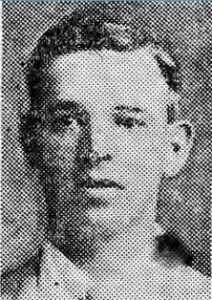
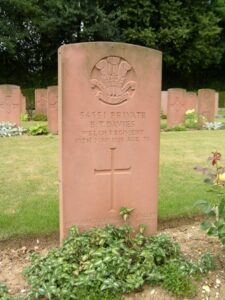
John Henry Davies, Acting Corporal, 16493, Kings Own Yorkshire Light Infantry. John was the son of John and Ann Davies, of Quay Street, Carmarthen. He must have been working in Yorkshire prior to the war, as he enlisted at Doncaster into the 9th Battalion, King’s Own Yorkshire Light Infantry, which formed part of 64 Brigade, 21st Division. The Division crossed to France in September 1915, and was immediately thrown into action at Loos on 26 September 1915, whereupon it suffered over 3,800 casualties for very little gain. They remained in the Loos sector over the coming winter, and were still there in the spring of 1916 when John was wounded. He died as a result of his wounds on 30 April 1916, aged 32, and is buried at Bois Guillaume Communal Cemetery, France. John is commemorated at St. Peter’s Church, Carmarthen, but his parents are buried at Llangunnor Churchyard.
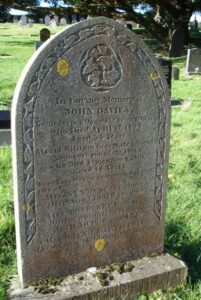
John Elias, Gunner, 43998, Royal Garrison Artillery. John was the son of Hannah Elias, of Glantowy Cottage, Llangunnor. He had served with the 3rd Carmarthen Volunteers prior to the war, and married Nellie Price, of 1, Osborne Terrace, Penrhiwceiber, on 12 October 1913. John enlisted at Mountain Ash on 1 September 1914, and was posted to the 51st Siege Battery, Royal Garrison Artillery, moving to France on 17 March 1917. The battery moved to Ypres, where it was in support of the British offensive, called the Third Battle of Ypres, which began after a successful attack at Messines Ridge. John was killed during the Battle of the Menin Road on 24 September 1917. He was 35 years old, and is buried at The Huts Cemetery, Belgium. John is not named on the County War Memorial roll.
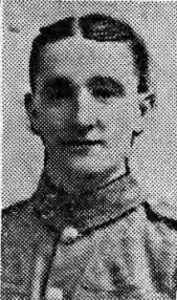
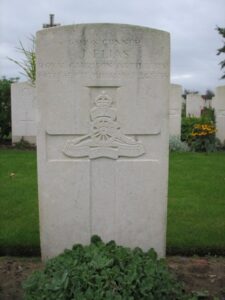
Arthur Fallon, Private, 13103, Welsh Regiment. Arthur was born in Worcestershire in 1893, and was the brother of Frances Fallon. The two siblings had been raised in a home in Kidderminster but moved to west Wales prior to the war. Records show that Arthur resided at Abergwili prior to the war, and was well known at Llangunnor, through working for Colonel William Charles Aslett at Bolahaul Farm, Llangunnor. Arthur enlisted at Carmarthen soon after the outbreak of war, into the 8th Battalion, Welsh Regiment. The battalion was formed at Cardiff in August 1914, moving to Salisbury Plain to join 40 Brigade, 13th (Western) Division. The battalion moved to Chiseldon in October then in December moved again to billets in Bournemouth, where it became converted to the Pioneer Battalion to the 13th Division. In February 1915 the division moved to Aldershot to complete its training, then on 15 June 1915 sailed from Avonmouth for Mudros, before being landed ashore at Anzac, Gallipoli on 5 August 1915, to fight alongside the Anzacs in a great diversionary attack. The 8th Welsh, now reverting to its infantry role, marched out from Anzac Cove on the following day and took up reserve positions at the mouth of Chailak Dere. The 13th Division launched a great assault on Chunuk Bair on 7 August and took its objectives, despite heavy losses, so at dawn on 8 August 1915 the 8th Welsh moved forwards, supported by the heavy guns of the ships deployed offshore. As the battalion crossed Apex Ridge, the men were mown down by heavy machine-gun fire and was almost decimated. Following a terrible time at Gallipoli, the Division was evacuated to Egypt on 8 January 1916, concentrating at Port Said, where it held forward posts in the Suez Canal defences. On 12 February 1916 the Division began to move to Mesopotamia, to strengthen the force being assembled for the relief of the besieged garrison at Kut al Amara. By 27 March, the Division had assembled near Sheikh Saad and came under orders of the Tigris Corps, and then took part in the attempts to relieve Kut. However, after these efforts failed and Kut fell, the British force in the theatre was built up and reorganised. Arthur sadly died of heat exhaustion in Mesopotamia on 29 June 1916. The 23-year-old was buried in Amara War Cemetery. His only known relative, his sister, Frances, married Archibald Joseph Cole in 1919 and the couple resided at Manordeilo. Arthur is commemorated at Babell Chapel in Llangunnor.
Robert Hugh Harris, Second Lieutenant, West Riding Regiment. Robert was the son of Edward Charles and Emily Charlotte Harris, of Bryn Towy, and the husband of Annette Brown-Clayton. He was living in Canada at the outbreak of war, and returned home to join the Public Schools Battalion, Middlesex Regiment. Made up of well educated men, this battalion proved to be a perfect breeding ground for officers, and so Robert was commissioned into the West Riding Regiment in May 1915, and was posted to the 8th Battalion, which was attached to 34 Brigade, 11th (Northern) Division. On 1 July 1915 the Division sailed from Liverpool, landing at Alexandria, before moving on to Mudros, and landed at Suvla Bay, Gallipoli on 7 August 1915, remaining there until the evacuation to Egypt on 21 December 1915. During July 1916 the Division landed at Marseilles, and then spent remainder of the war on the Western Front. They fought at the Battle of Flers-Courcelette during the Somme Offensive, and it was around this time that Robert was killed, on 28 September 1916. He was 39 years old, and is commemorated on the Thiepval Memorial, France.
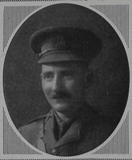
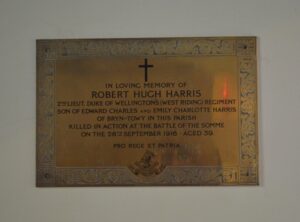
David Jones, Private, SE/14561, Royal Army Veterinary Corps. David was the son of David and Margaret Jones, of Caeau Gwynion, Llangunnor. Very little is known of him, but he enlisted at Woolwich into the Royal Army Veterinary Corps. David died on home service on 7 March 1916. He was 33 years old, and is buried at Llangunnor (St. Cynwr) Churchyard. David is not named on the County War Memorial roll.
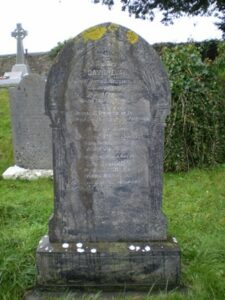
William Llewelyn Morgan, Private, 29469, South Wales Borderers. William was the son of John and Rachel Morgan, of Penybank, Pensarn, Carmarthen. He enlisted at Carmarthen into the army, and was posted to France, where he joined the 11th Battalion, South Wales Borderers. The battalion had been in France since landing in December 1915 as part of 115 Brigade, 38th (Welsh) Division, and had fought at Mametz Wood from 7 July 1916. From August onwards the Division was at Boesinghe, situated on the Yser Canal, and here launched its attack on Pilckem Ridge on 31 July 1917. William was wounded in the head and neck at Langemarck, during an assault on White House, and was admitted to Hospital on 30 August 1917. He was brought to the 7th Canadian General Hospital at Étaples for further treatment, and seemed to be recovering, but had a relapse and died on 2 October 1917. He was 19 years old, and is buried at Étaples Military Cemetery, France.
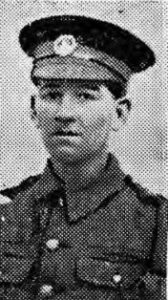
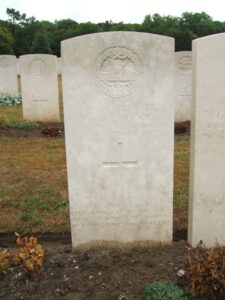
Morgan Morris, Private, 54268, Welsh Regiment. Morgan was the son of William and Anne Morris, of Brynhyfryd, Llangunnor, Carmarthen. He enlisted at Carmarthen into the army, and was posted to France in May 1916 joining the 9th Battalion, Welsh Regiment, which was attached to 58 Brigade, 19th (Western) Division. Morgan would have taken part in the attack at La Boiselle on 1 July 1916, and saw much fighting during his time at war, as the battalion took an active role in the Somme offensive. On 31 January 1917 the Welshmen’s positions were hit by a bombardment of German gas shells, and Morgan suffered severe gas wounds. He died the following day, on 1 January 1917, aged 27, and is buried at Sailly-Au-Bois Military Cemetery, France. Morgan is listed among the Llangunnor men on the County War Memorial roll.
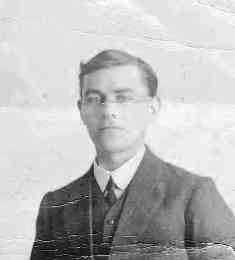
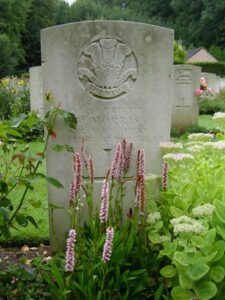
Thomas Owens, Private, 54149, Welsh Regiment. Thomas was the son of John and Elizabeth Owens, of Mount Hill Farm, Llangunnor, Carmarthen. He was residing with his brother-in-law, PC Davies, of Robinson Street, Llanelli when he enlisted at Swansea into the army. Thomas was posted out to France to join the 13th Battalion, Welsh Regiment, which had recently been moved from the Somme area, after the fighting at Mametz Wood, as part of 114 Brigade, 38th (Welsh) Division. Thomas joined the battalion while it was holding the line near Boesinghe. Thomas was wounded while the 13th Welsh were in the line at the Canal Bank. He died of his wounds on 28 February 1917, aged 36, and is buried at Mendinghem Military Cemetery, Belgium.
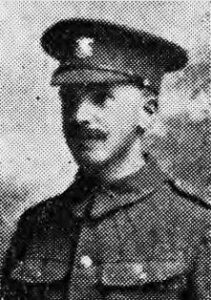
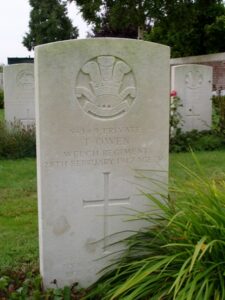
Frederick George Tansill, Private, 42156, East Yorkshire Regiment. Frederick was the son of George and Catherine Tansill, of 1, Towy Villa, Station Road, Carmarthen. He worked at the GWR Depot at Carmarthen prior to enlisting at Carmarthen into the army. He was posted to the 1/4th Battalion, East Yorkshire Regiment, which was attached to 150 Brigade, 50th (Northumbrian) Division. The Division had been in France since April 1915, and had fought at Ypres and on the Somme. During 1917 they fought at the Battle of Arras, then at Third Ypres. During March 1918 they were stationed near St. Quentin, and were hit here by the German Spring Offensive of 21 March 1918, taking part in a gallant rearguard action during the Actions at the Somme Crossings, and then at the Battle of Rosieres. After suffering terrible casualties, the Division moved north to Flanders to rest and rebuild, but in April the Germans launched an attack in Flanders, around the Lys, and the Division saw much fighting again. The battered Division was moved to a quiet sector on the Aisne to rebuild, but unfortunately the Division was hit hard by a surprise enemy attack, suffered heavy casualties. Frederick was killed on the Aisne on 8 September 1918. He was 19 years old, and is buried at St. Erme Communal Cemetery Extension, France. His elder brother William also fell.
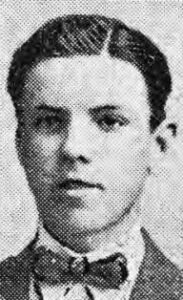
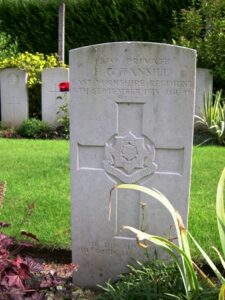
William James Tansill, Sapper, 448488, Royal Engineers. William was the son of George and Catherine Tansill, of Towy Villa, Old Station Road, Carmarthen. He worked as an Engine Cleaner at the GWR Depot at Carmarthen prior to the war and enlisted at Carmarthen into the Welsh Field Company, Royal Engineers. The Company served at Gallipoli with the 53rd (Welsh) Division, before being evacuated to Egypt in January 1916, where it was renamed the 437th Field Company. It remained on the Suez Canal defences for a year, then in March 1917 took part in the advance into Palestine. William became ill and died of dysentery on 29 July 1917, aged just 22. He is buried at Alexandria (Hadra) War Memorial Cemetery, Egypt. His brother Frederick also fell.
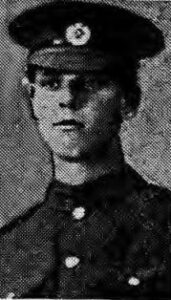
David Lewis Thomas, Private, 320496, Welsh Regiment. David was the Son of John and Mary Thomas, of Tyrdu, Llangunnor. He enlisted at Carmarthen into the Pembroke Yeomanry, which moved to Norfolk attached to the 1st Mounted Division. In March 1916 the Division moved to Egypt, and took over the Suez Canal Defences. In March 1917 the Pembroke and Glamorgan Yeomanry merged to form the 24th Battalion, Welsh Regiment, and became part of 231 Brigade, 74th (Yeomanry) Division. The Division fought through the Palestinian Campaign, at the Battles of Gaza and the Battle and capture of Jerusalem. David was killed during the attack on the Sheria heights on 6 November 1917. He was 25 years old, and is buried at Beersheba War Cemetery, Israel.
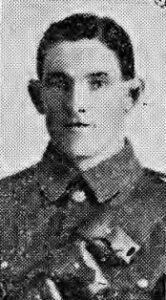
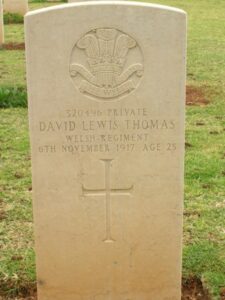
Henry Thompson White, Lieutenant, Welsh Regiment. Henry was the son of John Davies White and Lucy Thompson White, Chemists, of Guildhall Square, Carmarthen, and was the brother-in-law of the Vicar of Llangunnor. He worked for the London and County Bank in London as a Bank Clerk prior to the war, and married Kathleen Marion Vereker in London on 16 August 1911. Henry enlisted into the 19th Battalion, Royal Fusiliers. On 6 April 1915 Henry was commissioned into the 3rd Battalion, Welsh Regiment, and was then posted to the 1st Battalion, Welsh Regiment, which was attached to 84 Brigade, 28th Division. On 28 September the 1st Welsh launched an attack at Loos against the Hohenzollern Redoubt. Henry was wounded during the fighting, and after a brief spell in hospital was posted to the 2nd Battalion, Welsh Regiment, which was attached to 3 Brigade, 1st Division. The division was by then on the Somme, and was caught up in heavy fighting around High Wood and Munster Alley. On 8 September 1916 the 2nd Welsh moved through Munster Alley towards High Wood, where 3 Brigade had been tasked with the capture of the wood. The Welsh lost heavily in the attack, with seven officers and 66 other ranks killed or missing. Henry was among the officers posted as missing during the assault on High Wood that day, and was 37 years old. For some strange reason, he is commemorated on the Jerusalem Memorial, Israel! As of today (28 August 2013) the CWGC have accepted my evidence that Henry was wrongly commemorated, and his name will be added to the new France 1914-1918 Memorial when it is built.
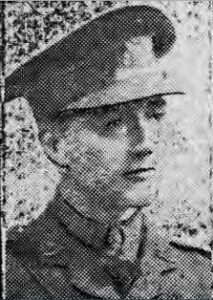
———————————————————————————————————————————————————————————
World War Two, 1939-1945
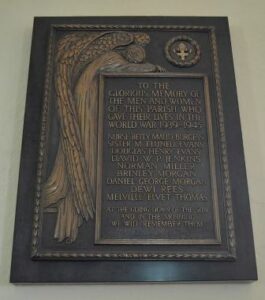
Betty Maud Burgess, Nurse. Betty was born in Exeter on 18 February 1922, the daughter of Frederick James Burgess and Florence Mary Burgess (nee Hooper). Her father worked for the Great Western Railway, and moved the family to Whitland, where he had gained the position of Station Master. Her mother died soon afterwards and in 1931 his father married a widow, Ellen Edwards (nee James), of Llanfallteg. By 1939 the family was residing at Tynewydd Road, Carmarthen, and Frederick had become Station Master at Carmarthen Railway Station. Betty left home after the outbreak of war to become a nurse and worked in Biggleswade. She contracted diphtheria during her work as a Nurse and died at the Three Counties Emergency Hospital, Stotford on 26 November 1944. The remains of the 22-year-old were conveyed home to Carmarthen and she was buried in St. Cynwyr’s Churchyard, Llangunnor on 1 December. Betty is not commemorated as a casualty of war by the CWGC, but she is commemorated on the Llangunnor War Memorial.
Edgar Roy Carruthers, Flight Lieutenant (Pilot), 155753, Royal Air Force Volunteer Reserve. Edgar was born on 15 March 1921, the son of Christopher Carruthers and Hannah Jane Carruthers (nee Hughes), of 21, Bridge Street, Carmarthen. He worked as a Civil Servant in Cardiff prior to enlisting into the Royal Air Force Volunteer Reserve and trained as a pilot before being gazetted as Flight Sergeant in November 1943. He was then posted to 609 Squadron, Royal Air Force, which was an RAF Fighter Command unit, equipped with the Supermarine Spitfire, based at RAF Duxford. In the summer of 1942 the squadron re-equipped with Hawker Typhoon IB’s, to counter the Luftwaffe’s Focke-Wulf Fw 190 fighter, and was very successful. During the opening months of 1944 the Squadron was involved with the destruction of German Radar Stations along the French Coast, prior to the Normandy Landings, then took part in air strikes on vital targets in occupied Europe. After the end of the war, the Squadron remained in Germany, based at RAF Wunstorf. Edgar was killed when he flew his Hawker Typhoon IB into the ground whilst descending through low cloud on 8 August 1945. The 24-year-old was buried in Becklingen War Cemetery, Germany. Edgar is not commemorated on the Llangunnor War Memorial, although his parents later lived there, and are buried in Llangunnor Churchyard.
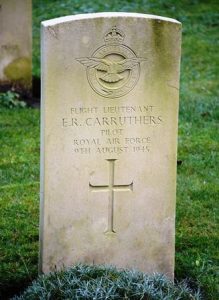
Douglas Henry Evans, Private, Home Guard. Douglas was born at Lampeter on 11 February 1926, the son of Annie Amelia Critchley. His mother later married David Evans and Douglas was raised as his son. Douglas was living at Tudorville, Llangunnor with his grandmother when war broke out, and being too young for the army, joined the Home Guard. He was then posted to the 44th Warwickshire (Birmingham) Battalion, Home Guard and lodged at 21, Sycamore Road, Handsworth, Birmingham. Douglas died in Birmingham on 14 August 1943. The remains of the 17-year-old were brought home, and he was buried in St. Cynwyr’s Churchyard, Llangunnor. The photograph is courtesy of Bev Lewis.
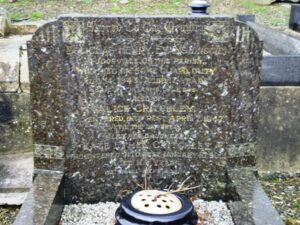
Mair Eluned Evans, Sister, 234957, Queen Alexandra’s Imperial Military Nursing Service. Mair was born in 1915, the daughter of Benjamin Evans and Mary Morfydd Evans (nee Thomas), of Pantyryn, Llangunnor. She worked as a Nurse at Carmarthen Hospital prior to the war, then volunteered to serve as a Nurse with Queen Alexandra’s Imperial Military Nursing Service. On 23 November 1942 Mair sailed from Liverpool aboard the S.S. Ceramic, a requisitioned former White Star Liner, which was bound for Australia. On the night of 6 December 1942 she was west of the Azores when she was hit by three torpedoes which had been fired from the German submarine U-515. Lifeboats were launched, but U-515 torpedoed her again, sinking Ceramic. The sea conditions were stormy, and the lifeboats capsized. Only one man survived the sinking, as he was taken by the Germans for interrogation. Mair was 27 years old when she died on 7 December 1942, and she is commemorated on the Brookwood Memorial, Surrey.
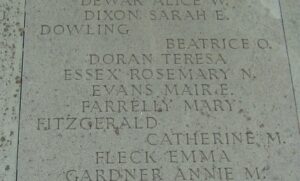
David William Phillip Jenkins, Private, 3970038, Welch Regiment. David was born in Newport, Monmouthshire on 17 September 1913. He came to Carmarthen as a young man to work at the Milk Factory in Johnstown. David married Minnie Griffiths in Llangunnor in 1937 and the couple set up home together at 20, Davies Town, Pensarn. David initially served with the Welch Regiment, but volunteered to serve with the Army Commandos and was posted to the Commando Training Centre at Achnacarry, Scotland, where he joined No. 12 Commando. David was killed during exercises at Achnacarry on 8 August 1941. The remains of the 26-year-old were brought home and he was buried in St. Cynwyr’s Churchyard, Llangunnor on 12 August.
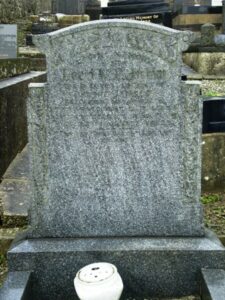
David Daniel Lewis, Private, 3955577, South Wales Borderers. Davidwas born in 1910, the son of William Lewis and Mary Lewis (nee Hughes), of 2, Little Bridge Street, Carmarthen. He married Alice Eileen Hurley in 1930, and the couple resided at 51, Pentrefelin Street, Carmarthen. David enlisted into the army and served with the South Wales Borderers. He died on active service on 13 December 1941. The 31-year-old was buried in St. Cynwyr’s Churchyard, Llangunnor on 16 December.
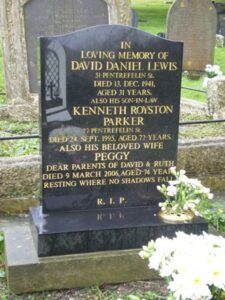
Norman George Miller, Private, 4202053, Leicestershire Regiment. Norman was born on 8 November 1914, the son of Frederick Miller and Annie Miller (nee Lewis), of 68, St. Catherine Street, Carmarthen. He worked as a cheesemaker at the dairy at Johnstown prior to the war and after marrying Elizabeth Ann Lewis, in 1938, the couple set up home at Brynmeurig, Pensarn. Norman enlisted into the army soon after the outbreak of war and was posted to the 2/5th Battalion, Leicestershire Regiment. The Battalion was mobilised in 1939 and went to France in 1940 as part of the 46th Division. It remained in England after the evacuation from Dunkirk, before embarking for the Mediterranean to take part in Operation Torch in January 1943, seeing heavy fighting at the Kassarine Pass. The Battalion then took part in the landings at Salerno, and crossed the Volturna and Teano Rivers. Norman was badly wounded in Italy on 9 September 1943, and died of his wounds on 20 November 1943. The 29-year-old was buried at Bone War Cemetery, Annaba, Italy. Elizabeth passed away in 1976, and is buried in St. Cynwyr’s Churchyard, Llangunnor.
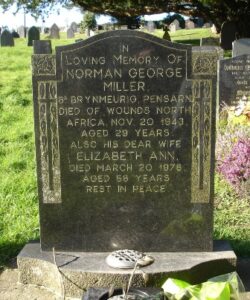
Brinley Morgan, Private, 2140911, Pioneer Corps. Brinley was born at Llangunnor on 6 August 1908, the son of William Morgan and Annie Morgan. The family had moved to 7, Little Water Street, Carmarthen by 1911. Brinley worked as a gardener prior to the war and lodged at Penymorfa Cottage, Pensarn. He left Carmarthen to enlist into the Royal Engineers soon after the outbreak of war and was posted to the 59th Field Company, Royal Engineers, which was attached to the 4th Division. The Division had suffered severe casualties in France in 1940 and spent two years rebuilding before embarking for North Africa early in 1943. The Division then joined the First Army for the final stages of the Tunisian Campaign, seeing heavy fighting during Operation Vulcan, the final ground attack against Axis forces in North Africa which led to the surrender of the Afrika Korps in May 1943. The Division remained in North Africa for the coming months, before landing on mainland Italy. Brinley was accidentally killed in Italy on 18 October 1943. The 35-year-old was buried in Naples War Cemetery, Italy.
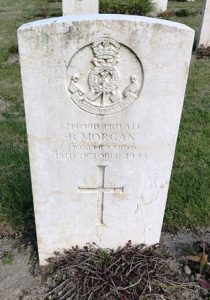
Daniel George Morgan, Cook, Merchant Navy. Daniel was born in 1920, the son of John Daniel Morgan and Gwenllian Morgan (nee Thomas), of Penhill, Llangunnor. His mother died in 1922 and his father remarried to Hannah Smith, of Llandefeilog in 1925. Daniel left home as a young man to enlist into the Merchant Navy and was posted aboard the Middlesborough registered tanker, SS Empire Amethyst. On 13 April 1942, Empire Amethyst was on route from New Orleans for Freetown, and was about 40 miles south of Haiti, carrying a cargo of 12,000 tons of clean oil, when she was torpedoed by the German Submarine U-154 and sunk with the loss of all her crew of 47. Daniel was 22 years old when he died that day. He has no known grave but the sea, so is commemorated among his fellow crewmen on the Tower Hill Memorial, London.
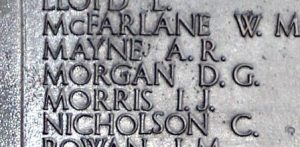
Dewi Rees, First Radio Officer, Merchant Navy. Dewi was born at Porth on 15 January 1912, the son of P. E. Rees. The family later moved to Carmarthen. Dewi left home as a young man to join the Merchant Navy and trained as a Wireless Operator. He married Elizabeth Evans in Yorkshire in 1935 and by 1939 the couple were residing at 26, Moreton Road, Grimsby. Following the outbreak of war Dewi was posted aboard the Belfast registered MV Fort Richepanse, which had been requisitioned from the French following their surrender in May 1940. Elizabeth then moved to Portfield, Haverfordwest. In August 1941 Fort Richepanse departed from Montreal for Liverpool, carrying a cargo of almost 3,000 tons of general goods. During the evening of 3 September 1941 Fort Richepanse, sailing without an escort, was torpedoed and sunk by the German submarine U-567 about 450 miles southwest of Bloody Foreland, sinking with the loss of 36 lives. Dewi was 29 years old when he died that day, and is commemorated on the Tower Hill Memorial, London.
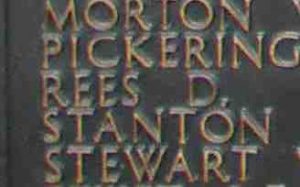
Melville Elvet Thomas, Aircraftman 1st Class, 1312270, Royal Air Force Volunteer Reserve. Melville was born on 30 September 1920, the son of David Thomas and Annie Thomas (nee Jones), of Towy Cottage, Llangunnor. He worked as a coach body builder prior to enlisting into the Royal Air Force Volunteer Reserve and was posted to RAF Technical Command at RAF Tangmere. Melville was asleep in his barracks at Shepperton during the early hours of 23 February 1944 when a German High Explosive bomb was dropped and brought the building down on him. His body was recovered from the ruins, and the remains of the 23-year-old were conveyed home and buried in St. Cynwyr’s Churchyard, Llangunnor on 28 February.
